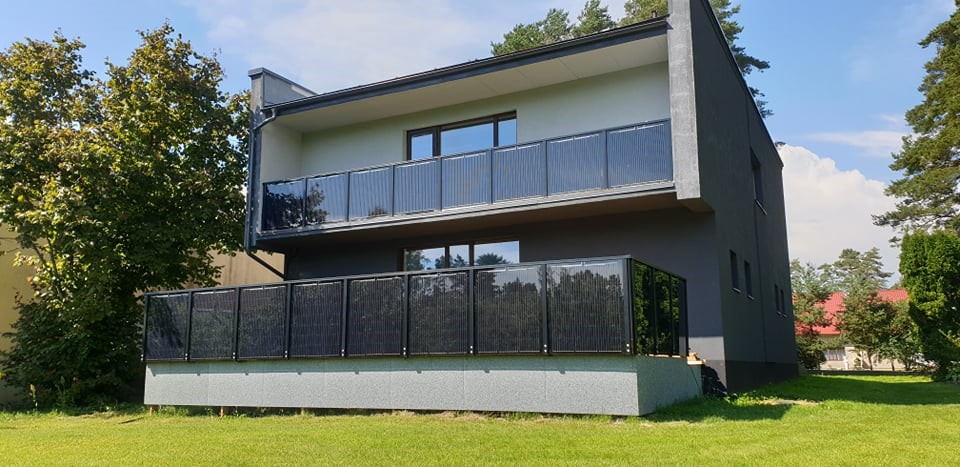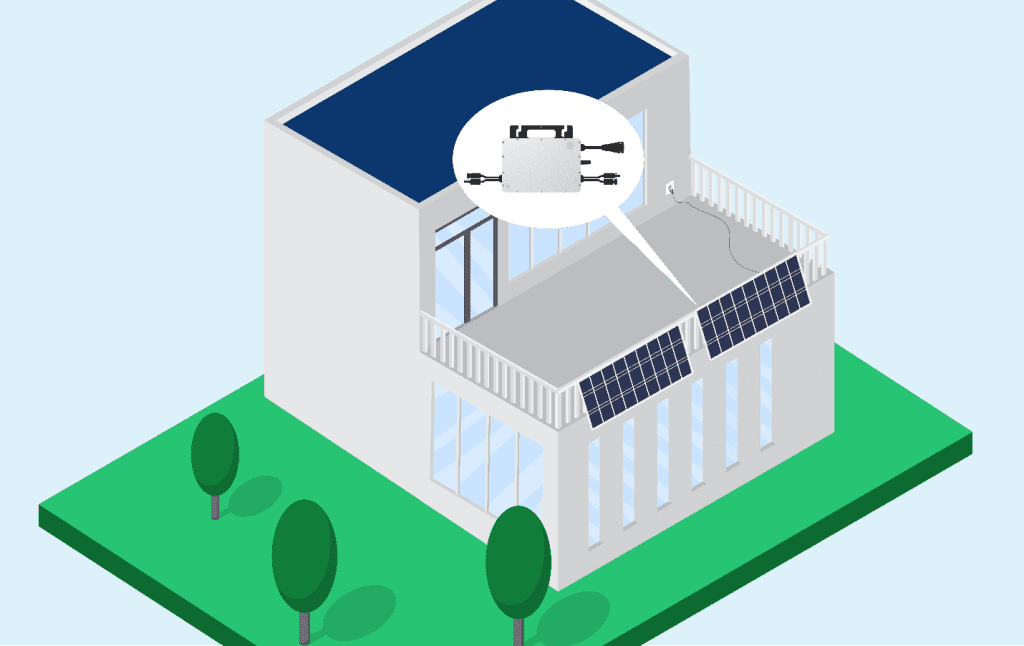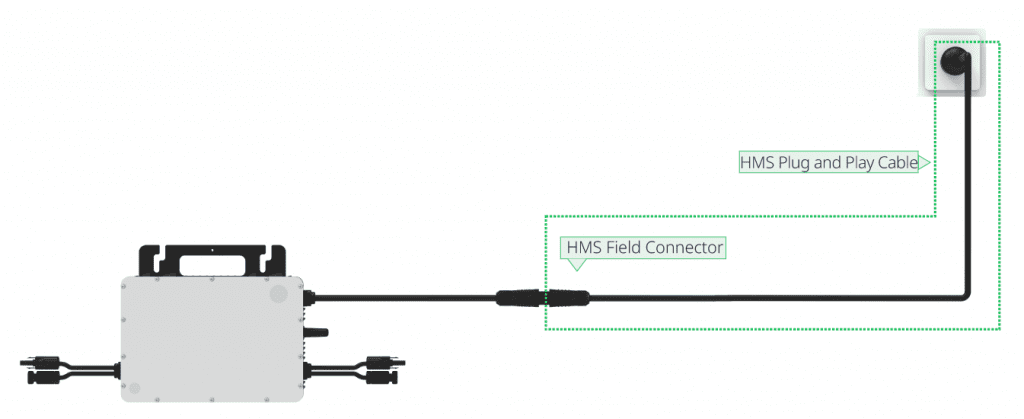Is investing in balcony solar systems the way forward in 2023?
What is a balcony solar system?

By now you probably know that rooftop or ground-mounted solar installations are used for houses that have a suitable (lots of sun, little shade) roof or garden space.
But what if you don’t have a garden or a roof that you can use?
Well, you don’t need to miss out on solar power just because you don’t live in a traditional house. If you live in an apartment and you still want to have your own solar power supply, then a balcony solar system is an ideal alternative.
Balcony solar systems, otherwise known as mini solar systems, are compact and efficient solutions for harnessing the power of the sun to generate your own supply of electricity.
Over the last few years, balcony systems have grown in popularity, mostly due to their accessibility and ease of installation. In most cases, all that’s involved in a balcony system installation is clipping it onto the balcony railings and plugging it in, et voila!
Why you need a balcony solar system
Firstly, balcony solar systems are incredibly easy to install compared to some traditional solar panel systems, which often have lots of complicated wiring paths to connect to.
Also known as a plug-in solar system, a balcony system can directly connect to your home circuit simply by plugging into a socket. These sockets, commonly known as Schuko plugs and outlets in Europe, open up a new world of possibilities for property owners.
Users can simply plug their balcony solar system into a wall outlet and begin producing electricity, with no need for an expensive professional panel design and assessment. Meaning that complex installations are a thing of the past for those who invest in plug-in solar devices.
As well as this, balcony solar systems are just as easy to unplug and take with you when you move home — saving even more time and money on new panels every time you wish to move on.
What’s more, balcony solar panels don’t require a registration with the operator in the same way that traditional roof- or ground-mounted systems do. Typically, when you connect your solar panels to the main grid, you will need to report to the operator. However, if your solar system is under the European upper limit standard of 800 W, you don’t need to register with an operator.
The German standard differs slightly, with the cap sitting at 600 W. But this could all change very soon, as a proposal to increase the standard to 800 W was drafted by VDE (Verband der Elektrotechnik Elektronik Informationstechnik e.V.) in January 2023. The idea is that this should make it easier for users in Germany to access solar energy through mini power generation systems too, as opposed to just the traditional roof- or ground-mounted solar systems.
The new 800 W German standard
As one of the largest technology organizations in Europe, VDE is committed to delivering the highest level of quality standards, ensuring consumer protection for over 100 years.
The organization aims to not only help households become more environmentally friendly, but also to ensure household safety and regulatory compliance in relation to solar energy guidance.
After careful consideration, VDE proposed a new maximum power output of 800 W for a balcony solar system, which aims to improve the quality and safety of PV installations within Germany.
The proposed standard purports to align with the pre-existing and already adopted standard of 800 W across the rest of Europe. It also includes new testing and certification requirements to ensure that the solar systems meet specific performance standards, such as additional thermal cycling, damp heat, and mechanical stress testing.
As the world evolves into one that champions clean sources of energy, this is a significant step forward in solar for balcony systems. It will allow German households to use solar energy to meet their electricity usage more effectively, while at the same time removing any potential barriers that German residents may find offputting when exploring the possibilities of solar energy.
VDE recommends that installations be carried out by a professional electrician. However, there is a pressing need for households and properties across the globe to become more sustainable and environmentally friendly. So in order to enable the widespread use of balcony solar systems, VDE is in favor of the Schuko plug for supplies up to a total system limit of 800 W.
Since the German standard will then align with the European standard, it’s thought that the move will encourage more users to make the switch to solar energy. Plus, it means that mini solar systems can be used with any type of meter, making solar energy all the more accessible.
What components do you need in your balcony solar system?
There are four key components that are necessary for the safe and effective running of your balcony solar system. Every piece of equipment is equally as important as the next, each serving a critical role in the production of energy for your home. The crucial components of every balcony solar PV system are made up of:
- Solar panels: Naturally, the solar panels are the stars of the show. These are the panels that will absorb light from the sun and convert it into DC energy, which then passes through to the microinverter to be converted again. This energy can also be stored in a battery ready for use later, when the sun is no longer shining.
- Mounting rack: The mounting rack is the framework that helps to fix your solar panels on your balcony safely – ensuring that there’s no wriggle room when mounting your balcony solar system is critical. It’s designed to be sturdy and long lasting, so that your PV system can continue generating electricity for years to come, without the need to replace parts.
- Microinverter: This is the component that brings the magic right into your home. The microinverter converts the DC electricity that is produced by the solar panels into AC electricity, ready for use in the household. What’s most impressive about our microinverter is that it tracks the maximum power point (MPP) of each solar panel so that each of your solar panels always works at its optimum level — thereby maximizing your solar harvest.
- Mains power cable: The mains power cable enables you to plug your system into a socket and connect it to your home circuit. This component is unique to balcony solar PV systems, which are plug-in-and-play appliances, unlike their traditional solar system counterparts. It means that users can simply insert the plug into an available and aptly placed socket in their home and begin generating electricity — it really is that simple.
The specific number of components and the size of the solar system will depend on the needs of the user, and how much energy they wish to produce.
However, these are the standard items you should expect to need for a fully functioning balcony solar PV system. Larger systems with multiple solar panels may need more microinverters than a smaller system with just one or two panels.
Another factor to consider is the space available to house the solar PV system. If you’re installing your system on a balcony, it’s expected that you may only need one or two panels to form your entire system.
If you are unsure about the number of components you might need, or the type of setup that’s suitable for your property, you should always consult with a professional prior to installation.
How Hoymiles microinverters can help with your balcony solar system

At Hoymiles, we are committed to delivering cleaner energy to all, at good value. Which is why our wide range of microinverters are ideally suited to help you make the most of your mini solar system.
Microinverters are used in a range of scenarios, including industrial and commercial rooftops, and residential projects, including home rooftops and carports. For mini solar systems like balcony solar, microinverters are particularly suitable thanks to their super-easy installation and lower upfront costs compared with traditional string inverters.
Our HMS series is an update from the classical HM series. They are compliant with the regulations and can make installing your balcony solar system much easier. The HMS-600/800-2T models have an output power capacity of 600 VA and 800 VA, and they can be used with up to 540 W PV modules.
With two input channels, HMS-600/800-2T can connect up to two panels, featuring independent monitoring of each panel to ensure maximum power production. The sub-1G communication method with your communication gateway is more stable than other models, and can reach longer distances for added reliability.
Our newly released FLEX series, also known as HMS cable system, includes flexible accessories for a single microinverter solar system. For example, our HMS Field Connector and HMS Plug and Play Cable are specifically designed for balcony solar systems.
The HMS Field Connector provides a quick and simple electrical connection between the microinverter and the grid, serving as a joining component. It can be used by those who have an AC cable and plug, but it also requires some wiring configuration.
While the HMS Plug and Play Cable consists of the field connector, AC cable and plug — with one end connected to the microinverter and the other plugged into the household socket. Users can enjoy the ease of plugging the microinverter directly into the socket, without the need for any extra wiring.

These accessories are compatible with all of our HMS microinverters.
While we have a large range of microinverters that you can explore, these are the two series that we recommend for balcony solar PV system installations. They are reliable, secure, and designed with simplicity and accessibility in mind.
Our friendly experts are always available to discuss your solar needs with you — should you need any assistance or advice, do reach out and we will be happy to help.
Is investing in balcony solar worth it?
If you happen to live in an area with an abundance of sunlight but you find yourself living in a property that doesn’t support traditional solar panel systems, balcony panels are definitely worth considering.
With energy prices rising and the need to be more sustainable constantly growing, a balcony solar panel system is a worthy investment. One that can end up paying dividends in the future. Offsetting the cost of your energy bills can’t be understated.
However, to ensure you’re making a solid investment, it’s always wise to consult with a professional who can evaluate your property alongside your energy needs. They can help you make an informed decision on whether this will be a good investment for you or not.
If you’d like to know more, or you’re ready to speak to one of our experts about how we can help, get in touch with us today. One of our friendly team members will be more than happy to discuss this with you.
